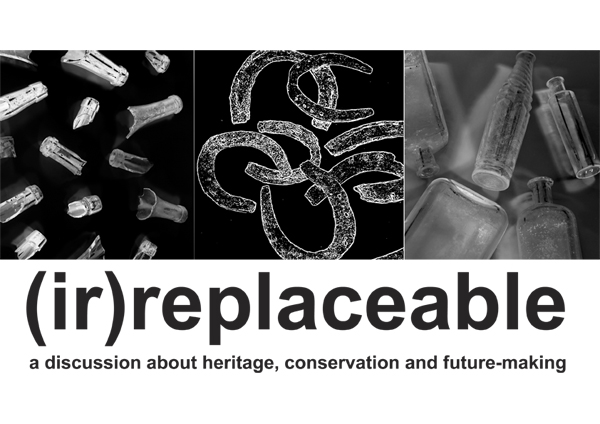(ir)replaceable symposium at UC

Last week I was one of several provocateurs to speak at an innovative symposium convened by Tracy Ireland and Steve Brown, hosted by the University of Canberra. The theme was heritage and specifically ‘what happens when conservation is envisioned as future-making rather than preservation’. The convenors curated a really diverse range of viewpoints from heritage professionals, theorists and practioners. It was great to have Cornelius Holtorf (Linnaeus University) and many others discuss the issues and opportunities of this concept of the (ir)replaceable. Ai Wei Wei’s famous Dropping a Han Dyanasty Urn hung over Cornelius during his conversation with Denis Byrne and provided a useful visual reminder of the anxieties around value, consumption and loss aversion.
In my provocation I followed on from Alice Gorman, who spoke about moon dust and shadows, by incorporating a screening of my 2013 video work Left Foot First. This work was made in response to my experience of Honeysuckle Creek Tracking Station, which relayed the moon landing to millions of television viewers. The abstract for my provocation follows.
Multiple Exposure: Encountering heritage meanings through art making and viewing
Drawing upon the field of reception studies and other critical thinking, this provocation proposes that there is no single reading or suite of meanings inherent to a place which we might call cultural heritage. Rather, values are actively generated within the relationship between a ‘text’ and its audience, or a place and the person experiencing it, in a process we might call encounter. In this sense, artistic responses and creative interventions in cultural heritage sites and places not only shape but re-make place and the ways in which it may be perceived by others. Exploring examples of how artists re-imagine place and mediate cultural heritage for new ‘viewers’, this provocation raises the question of whether art practice might be a radical mode of conservation.
